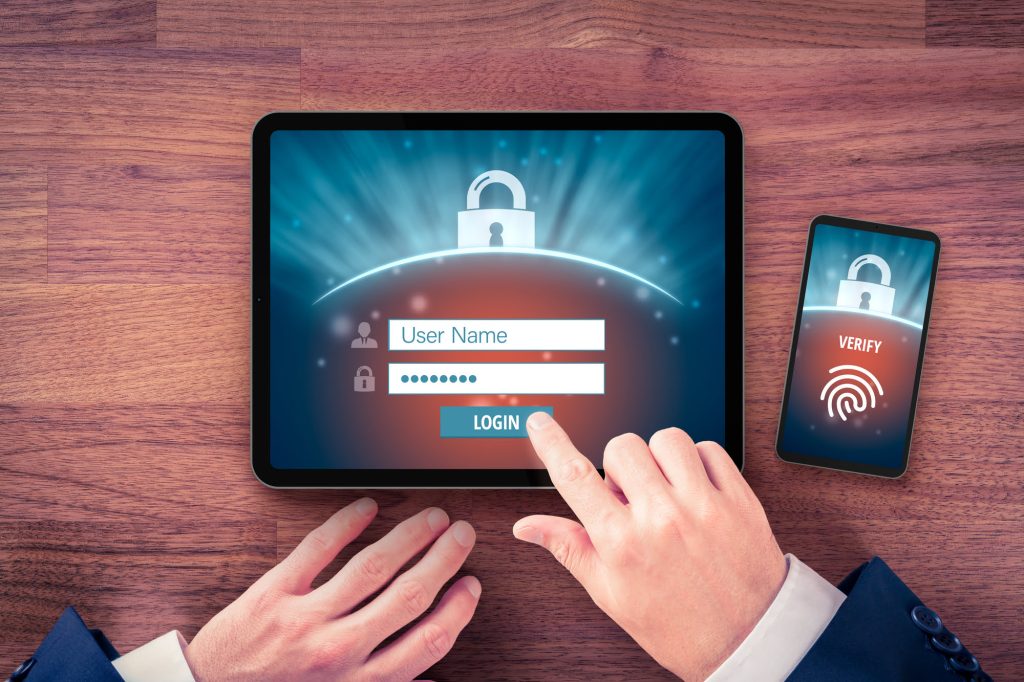- April 11, 2023
- Catagory Compliance
Why Multi-Factor Authentication Is Table Stakes for Effective Security
The move to remote work and hybrid workplaces has demonstrated that multi-factor authentication is now a must-have for effective security and employee data protection.

Gone are the days of just making sure staff have complex and unique passwords for everything they access. In addition to a username and password to log into an application, it’s a critical that you have a second layer of authentication – two-factor authentication or multi-factor authentication (MFA). This means that in addition to a password entered in the primary device, there’s an additional step to log in – multi-factor authentication either requires that another code be sent to a secondary device such as smartphone or a biometric step in the form of a fingerprint or voice identification system.
Your employees have already experienced multi-factor authentication in their daily lives. Major banks now use biometrics for mobile banking, and they will also need to authenticate through that device when logging onto their bank’s web site from a desktop computer.
And while you might think that multi-factor authentication is an advanced feature that’s only necessary for major financial organizations, there are plenty of reasons why you should add another layer of authentication for all employees accessing critical applications and customer data.
- Weak and stolen passwords: As much as employees are encouraged to use unique and complex passwords for each and every digital system they access, it means they must remember each and every one or rely on a password manager to keep track of them. These password managers can also be circumvented by threat actors .Password theft has become cleverer through methods such as keylogging, phishing, and pharming, which is when malicious code is injected onto a device that redirects employees to a phony website where they enter sensitive information, including authentication information.
- Remote access: For many organizations, the hybrid workplace is here to stay. Multi-factor authentication is essential if you’re to provide fully secure remote access without impairing employee productivity. It can even make logging in easier as single sign-on software combined with multi-factor authentication can help to avoid “login fatigue,” since it requires an initial login to access multiple applications.
- Compliance: Depending on your industry, your organization may be required to implement multi-factor authentication to bolster protection of sensitive financial or health data, as well as other personally identifiable information (PII) in accordance with regional, national, or international privacy legislation or regulatory frameworks.
Implementing multi-factor authentication ensures that you can get the most of your cybersecurity investments. Other technologies such as advanced firewalls and anti-virus software can only do so much to protect critical applications and sensitive data – without robust authentication and digital identity management, threat actors still have plenty of avenues to exploit to gain access to your systems.
Multi-factor authentication not only controls employee access, but it also acts as an alert mechanism when an unauthorized access attempt is made – if an employee gets a request for secondary authentication that they didn’t request, they can report it to the IT department, so they know that there’s active threat.
If you’ve not considered implementing multi-factor authentication, remote and hybrid working should be the tipping point, since your employees are likely using less secure internet connections to access your network and may even be using a personal device. Multi-factor authentication reduces the risk that comes with securing remote workers’ WiFi connections and personal devices.
No matter your industry or the size of your business, multi-factor authentication should now be considered table stakes when it comes to effectively securing your organization.




 Latest Blogs
Latest Blogs FAQ
FAQ